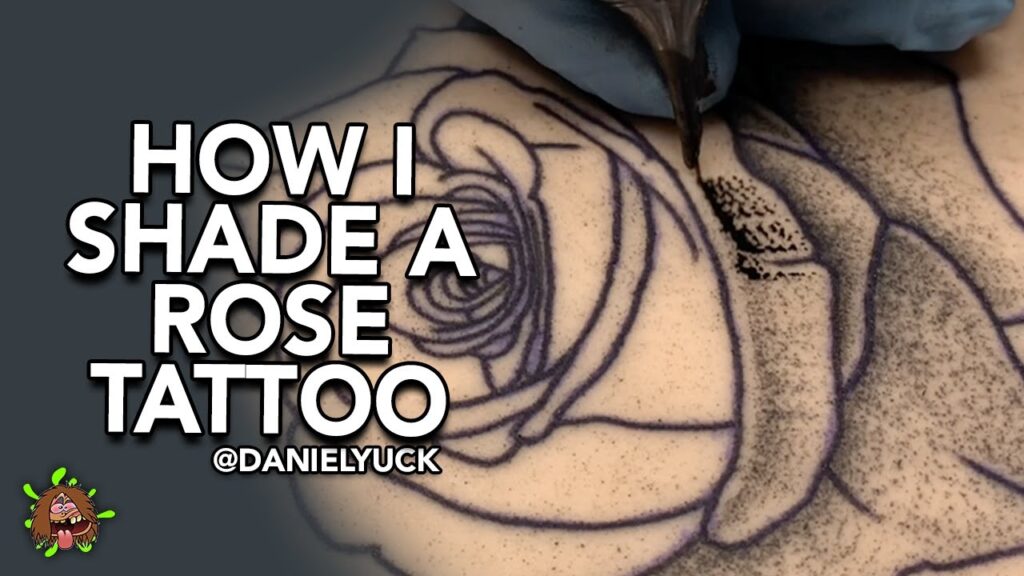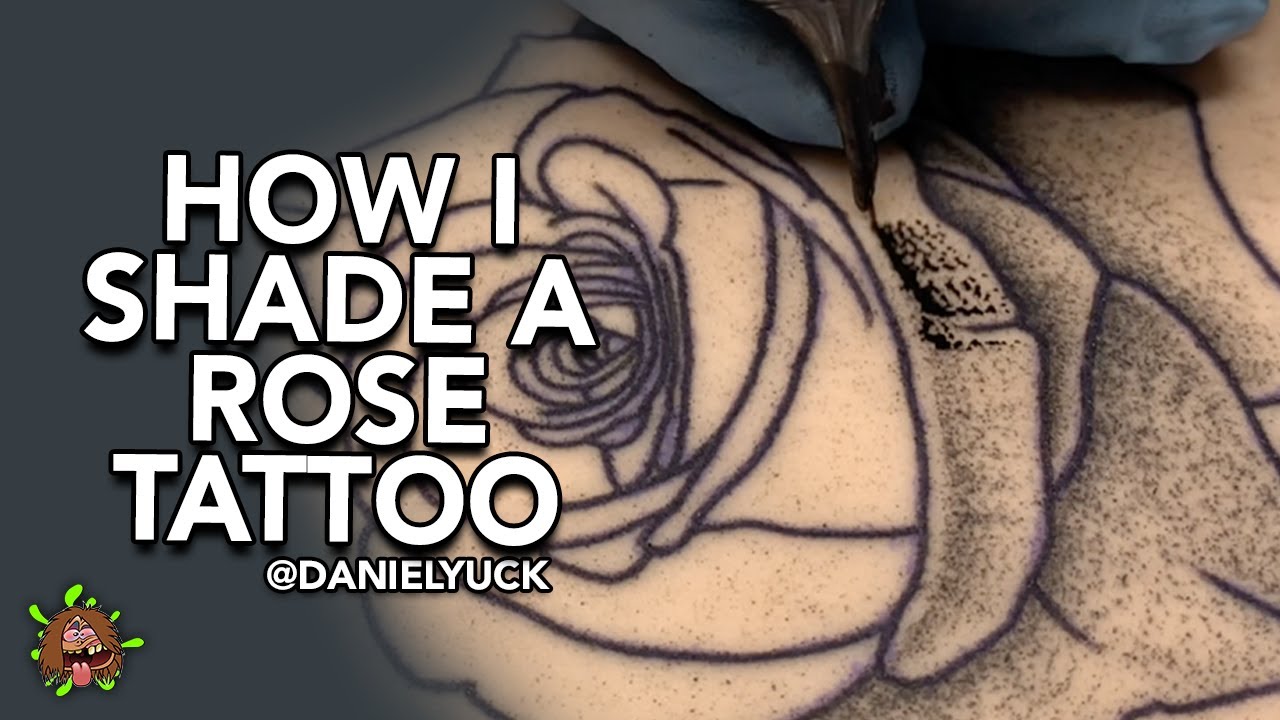
The Alluring World of Shading Rose Tattoos: A Comprehensive Guide
Rose tattoos have long been a staple in the world of body art, symbolizing love, beauty, and a myriad of other emotions. Among the various styles, the shading rose tattoo stands out for its depth, realism, and artistic flair. This comprehensive guide delves into the intricacies of shading rose tattoos, exploring their symbolism, popular placements, design variations, aftercare, and why they remain a timeless choice for tattoo enthusiasts.
The Enduring Symbolism of the Rose
Before diving into the specifics of shading rose tattoos, it’s crucial to understand the rose’s rich symbolic history. Across cultures and throughout time, the rose has represented a multitude of meanings, often intertwined with love, passion, and beauty. However, its symbolism extends far beyond romantic connotations.
- Love and Passion: The most common association, particularly with red roses.
- Beauty and Perfection: The rose’s intricate petals and delicate form embody aesthetic ideals.
- Hope and New Beginnings: White roses often symbolize purity, innocence, and fresh starts.
- Loss and Remembrance: Darker shades, such as black or deep red, can represent grief or mourning.
- Balance: The rose’s thorns serve as a reminder that beauty can be accompanied by pain.
The specific meaning of a rose tattoo can also depend on its color, the presence (or absence) of thorns, and the overall design. Understanding these nuances is essential when choosing a shading rose tattoo that resonates with your personal story and intentions. A well-executed shading rose tattoo can be a powerful statement, reflecting your inner self and personal journey.
The Art of Shading: Bringing Roses to Life
What distinguishes a shading rose tattoo from other rose tattoo styles is the masterful use of shading techniques. Shading adds depth, dimension, and realism to the design, making the rose appear more lifelike and visually captivating. Different shading styles can create varying effects, from soft and subtle gradients to bold and dramatic contrasts.
Common Shading Techniques Used in Rose Tattoos:
- Stippling: Creating shadows and textures using tiny dots. This technique is often used for a softer, more delicate look.
- Whip Shading: Using a flicking motion with the tattoo needle to create smooth transitions between light and dark areas. This is a versatile technique suitable for various styles.
- Color Packing: Filling in areas with solid blocks of color to create strong contrasts and bold designs.
- Grey Wash: Diluting black ink with distilled water to create varying shades of grey. This is a popular technique for creating realistic and subtle shading effects.
The choice of shading technique depends on the desired aesthetic and the skill of the tattoo artist. A skilled artist will be able to expertly blend these techniques to create a shading rose tattoo that is both visually stunning and uniquely personal. When choosing an artist, always examine their portfolio to see examples of their shading work and ensure they have experience with shading rose tattoos.
Popular Placements for Shading Rose Tattoos
The placement of your shading rose tattoo is just as important as the design itself. The location can influence the overall impact of the tattoo and how it interacts with your body’s natural contours. Here are some popular placements for shading rose tattoos:
- Arm: A versatile placement that allows for both small and large designs. The upper arm is a popular choice for showcasing detailed shading rose tattoos.
- Shoulder: A classic placement that accentuates the curves of the body. Rose tattoos on the shoulder can be easily concealed or displayed.
- Back: Provides a large canvas for intricate and elaborate designs. A shading rose tattoo on the back can be a stunning centerpiece.
- Thigh: A sensual and discreet placement that can be easily hidden or revealed.
- Rib Cage: A more painful but visually striking placement that follows the natural lines of the body.
- Hand/Wrist: Smaller shading rose tattoos can be placed on the hand or wrist for a delicate and eye-catching effect.
Consider your personal style, pain tolerance, and the size of the design when choosing the placement for your shading rose tattoo. It’s also a good idea to consult with your tattoo artist, who can offer expert advice on the best placement based on your specific design and body shape. A well-placed shading rose tattoo can enhance your natural beauty and make a powerful statement.
Design Variations: Exploring the Possibilities
The beauty of shading rose tattoos lies in their versatility. There are countless design variations to choose from, allowing you to create a tattoo that is truly unique and personal. Here are some popular design ideas:
- Realistic Rose: A highly detailed and lifelike depiction of a rose, often incorporating intricate shading and subtle color variations.
- Traditional Rose: A classic design featuring bold lines, vibrant colors, and minimal shading.
- Black and Grey Rose: A timeless and elegant design that relies solely on black ink and varying shades of grey to create depth and dimension.
- Watercolor Rose: A delicate and artistic design that mimics the look of watercolor paintings, with soft colors and blurred edges.
- Geometric Rose: A modern and abstract design that incorporates geometric shapes and patterns into the rose.
- Rose with Other Elements: Roses can be combined with other elements, such as skulls, butterflies, or script, to create a more complex and meaningful design. [See also: Skull and Rose Tattoo Meaning]
When choosing a design, consider your personal preferences, the symbolism you want to convey, and the overall aesthetic you are aiming for. Working closely with your tattoo artist is essential to create a shading rose tattoo that perfectly captures your vision. They can help you refine your design ideas, choose the right shading techniques, and ensure that the tattoo is executed flawlessly.
Aftercare: Protecting Your Investment
Proper aftercare is crucial for ensuring that your shading rose tattoo heals properly and remains vibrant for years to come. Following your tattoo artist’s aftercare instructions diligently is essential for preventing infection and preserving the quality of the tattoo.
General Aftercare Guidelines:
- Keep the tattoo clean: Gently wash the tattoo with mild soap and water 2-3 times a day.
- Apply a thin layer of aftercare ointment: Use a fragrance-free, hypoallergenic ointment to keep the tattoo moisturized.
- Avoid excessive sun exposure: Protect the tattoo from direct sunlight by wearing loose-fitting clothing or applying sunscreen after it has fully healed.
- Avoid soaking the tattoo: Refrain from swimming, bathing, or using hot tubs until the tattoo is fully healed.
- Don’t pick or scratch the tattoo: Allow the tattoo to heal naturally without picking or scratching at any scabs that may form.
The healing process typically takes 2-4 weeks, depending on the size and placement of the tattoo. During this time, it’s important to be patient and diligent with your aftercare routine. With proper care, your shading rose tattoo will remain a beautiful and vibrant piece of art for years to come. Consult your tattoo artist if you experience any signs of infection or have any concerns about the healing process.
Finding the Right Artist for Your Shading Rose Tattoo
Choosing the right tattoo artist is paramount to achieving a stunning shading rose tattoo. Not all artists are created equal, and it’s crucial to find someone with experience and expertise in shading techniques and rose tattoo designs. Here are some tips for finding the right artist:
- Research: Look for artists who specialize in realistic or black and grey tattoos, as these styles often require advanced shading skills.
- Portfolio Review: Carefully examine the artist’s portfolio to see examples of their shading work and rose tattoo designs. Pay attention to the level of detail, realism, and overall quality of their work.
- Consultation: Schedule a consultation with the artist to discuss your design ideas and ask any questions you may have. This is a good opportunity to assess their communication skills and ensure that they understand your vision.
- Hygiene: Make sure the tattoo studio is clean and sterile, and that the artist uses disposable needles and follows proper hygiene protocols.
- Reviews: Read online reviews and testimonials from other clients to get an idea of the artist’s reputation and customer service.
Investing time in finding the right artist will pay off in the long run. A skilled and experienced artist can transform your vision into a breathtaking shading rose tattoo that you’ll cherish for a lifetime. Don’t be afraid to ask questions, express your concerns, and trust your instincts when choosing an artist.
The Timeless Appeal of Shading Rose Tattoos
Shading rose tattoos have stood the test of time, remaining a popular and enduring choice for tattoo enthusiasts around the world. Their beauty, symbolism, and versatility make them a timeless classic that can be adapted to suit any personal style. Whether you’re looking for a small and delicate design or a large and elaborate piece, a shading rose tattoo can be a powerful and meaningful expression of your individuality. The intricate details achieved through shading bring the rose to life, creating a stunning visual impact that is sure to turn heads. From classic black and grey designs to vibrant watercolor creations, the possibilities are endless when it comes to shading rose tattoos. With proper care and a skilled artist, your shading rose tattoo will be a cherished piece of art that you’ll be proud to wear for years to come. The subtle nuances of shading elevate the simple rose to a work of art, making the shading rose tattoo a choice that will remain stylish and relevant for generations. The artistry involved in creating a captivating shading rose tattoo is a testament to the enduring appeal of body art and the timeless beauty of the rose itself. [See also: Best Tattoo Aftercare Products]

